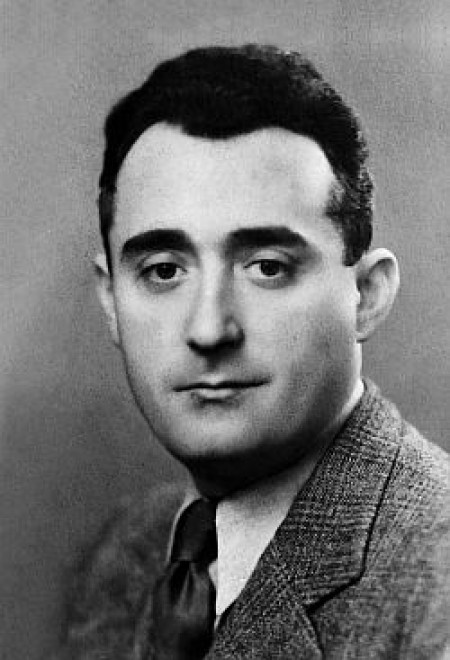Igló, 24 August 1903 – Bloomington, USA, 31 May 1959
Ede Zathureczky violinist, professor and director of the Academy of Music was a decisive personality of the second generation graduating in the workshop of Jenő Hubay of the Hungarian school of violin. He applied to the Academy of Music at the age of fourteen following the generation of Stefi Geyer, Ferenc Vecsey and József Szigeti. Despite his young age Hubay admitted him into his own class directly, where he became one of the favorite students of the master soon. Beyond his personal excellence he could thank to this fact that he was more and more regarded during the following decades as the worthy preserver of the world famous school of violin and heir of its tradition. From 1919 he became a student of the master school, as Hubay who had been appointed director in the meantime undertook the instruction of only these classes and did not want to allot the guidance of his student to anyone else. Zathureczky earned his artist degree in May of 1922, and was launched on his career ascending steeply in next January by his concert under the baton of his master in which his talent was discovered by the impresarios being present. He went to four very successful tours to Italy between 1923 and 1928, giving more than a hundred concerts there altogether and his fame surpassed even the ones of the greatest violinists. In the meantime he also performed in several other cities of Europe and in 1925 in America with success, playing under the baton of Bruno Walter in New York.
The year of 1929 brought a decisive turn in his career: he was invited to teach at the Academy of Music by his former master, where the other side of his skills, equal with his performing abilities, could unfold and could be brought to the foreground during more than a decade. However it was well known that Hubay regarded him as his successor leading the master school, following the death of the master in 1937 Zathureczky at the age of thirty-four had been teaching for less than a decade could not be placed officially above his time-honored colleagues. Therefore the independent operation of the artist school was suspended as a temporary solution. His exceptional skills in pedagogy were soon verified by shining results though, as more and more of his students won prizes in international competitions, for example Gabriella Lengyel, Róbert Virovai, Ferenc Albert and Dénes Kovács winner of the Flesch violin competition in London in 1955, and to be successor of him in the professorship and directorship, as well.
He established a close artistic collaboration with Béla Bartók in the middle of the 1930s; they performed together in several concerts at home and abroad (in Budapest and several provincial cities, in Temesvár and Kassa, as well as taking part in a tour in Italy from the end of March of 1939). There was a conspicuous change in the performing repertoire of Zathureczky at that time, in which his cooperation with Bartók must have played role beyond his personal improvement. The popular, virtuosic character pieces that dominated his programs in the 1920s were replaced by works of greater musical value, primarily the sonata-literature of the Classicism and Romanticism (with the artistry of Beethoven in the center) came to the front, and his repertoire was enriched by the compositions of Bartók, as well.
From the autumn of 1943 Zathureczky was appointed director at the Academy of Music as a successor of Dohnányi, though he could not conduct a peaceful creative work due to external conditions. Among the storms of World War II his tasks were the preservation of the values survived and then the guidance of the reconstruction following the devastation; while in the 1940s his margins were limited by the expectations of new political trends. At the same time the three years after 1946 brought the second golden age of the artistry of Zathureczky. His instrument could be heard at almost all the significant musical centers of Europe, he got acquainted with several composers personally that resulted in the enrichment of his repertoire with contemporary works. He fulfilled an immeasurably valuable cultural mission with serial performances of Bartók's Violin Concerto in 1948/1949. After 1949 due to the changes in international politics he could not travel to the West that resulted in the interruption of his artistic relations he had established earlier. In November of 1956 he traveled to Vienna in connection with a radio recording, from where - being persuaded by friends who got a scholarship for him - he continued his travel to the United States of America. He undertook the position of Head of Violin Department at Indiana University in Bloomington from the academic year of 1957/1958, though he was working on the preparation of his returning to Hungary. However on May 31 of 1959 he suddenly died, and similarly to Bartók he could return to his home country no more.
G. L.



